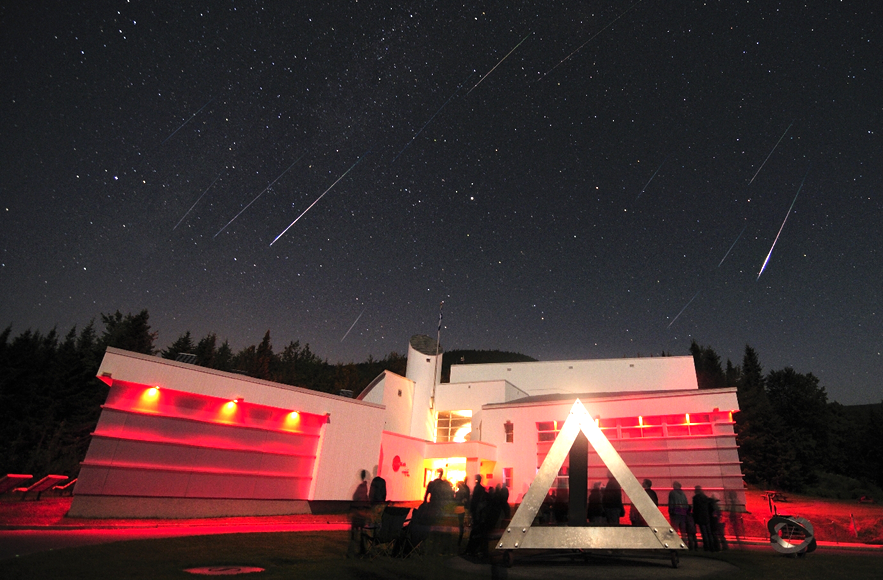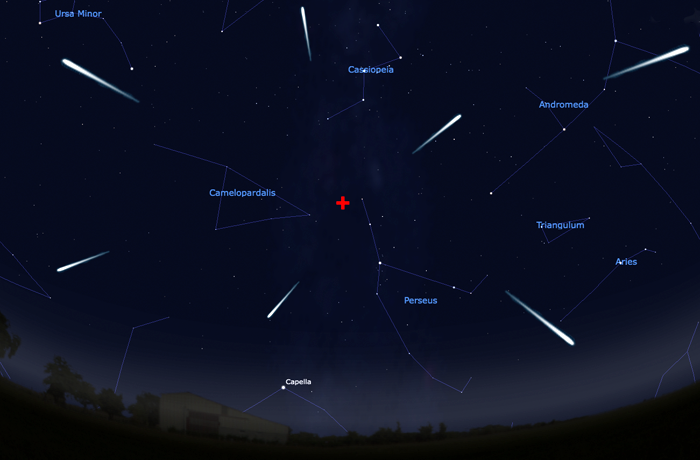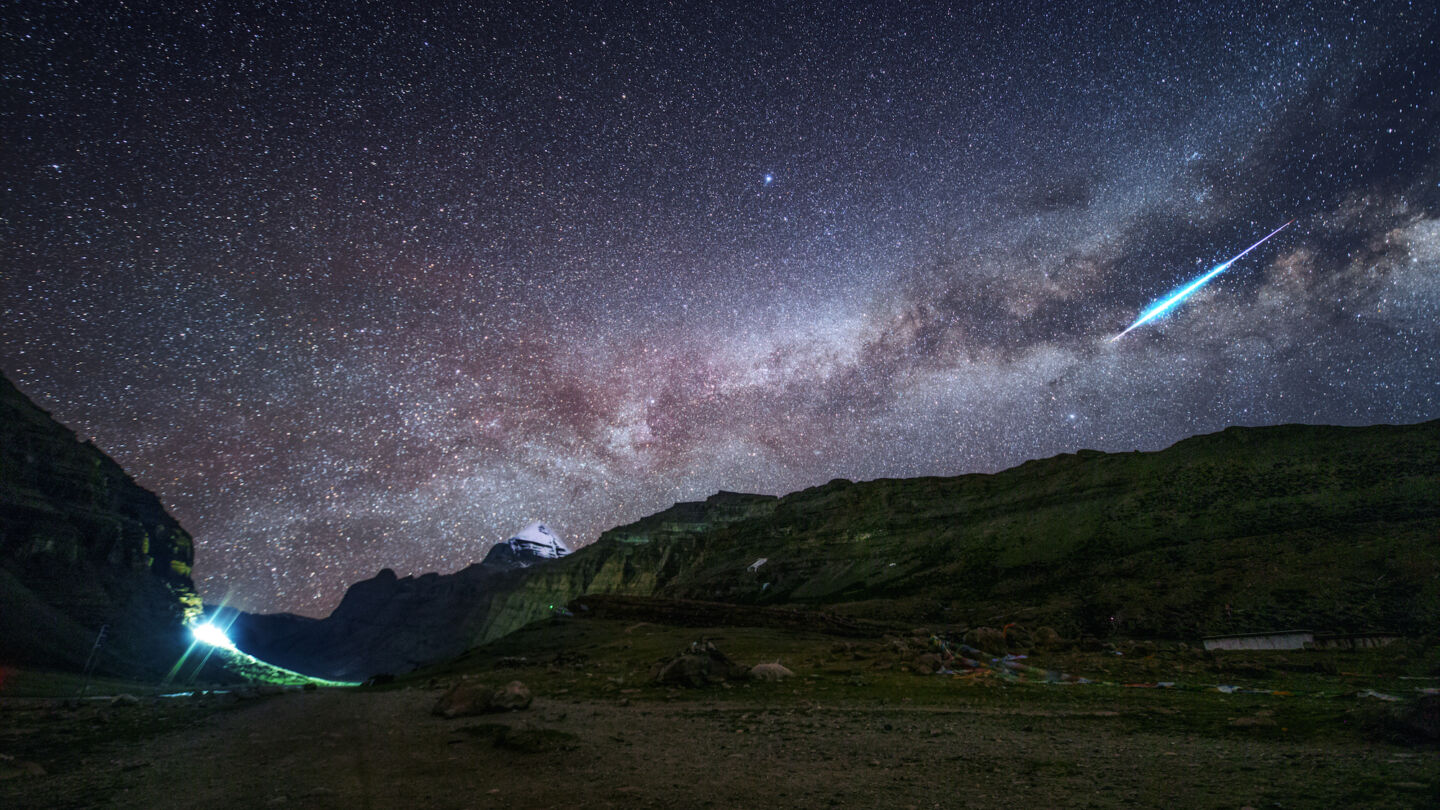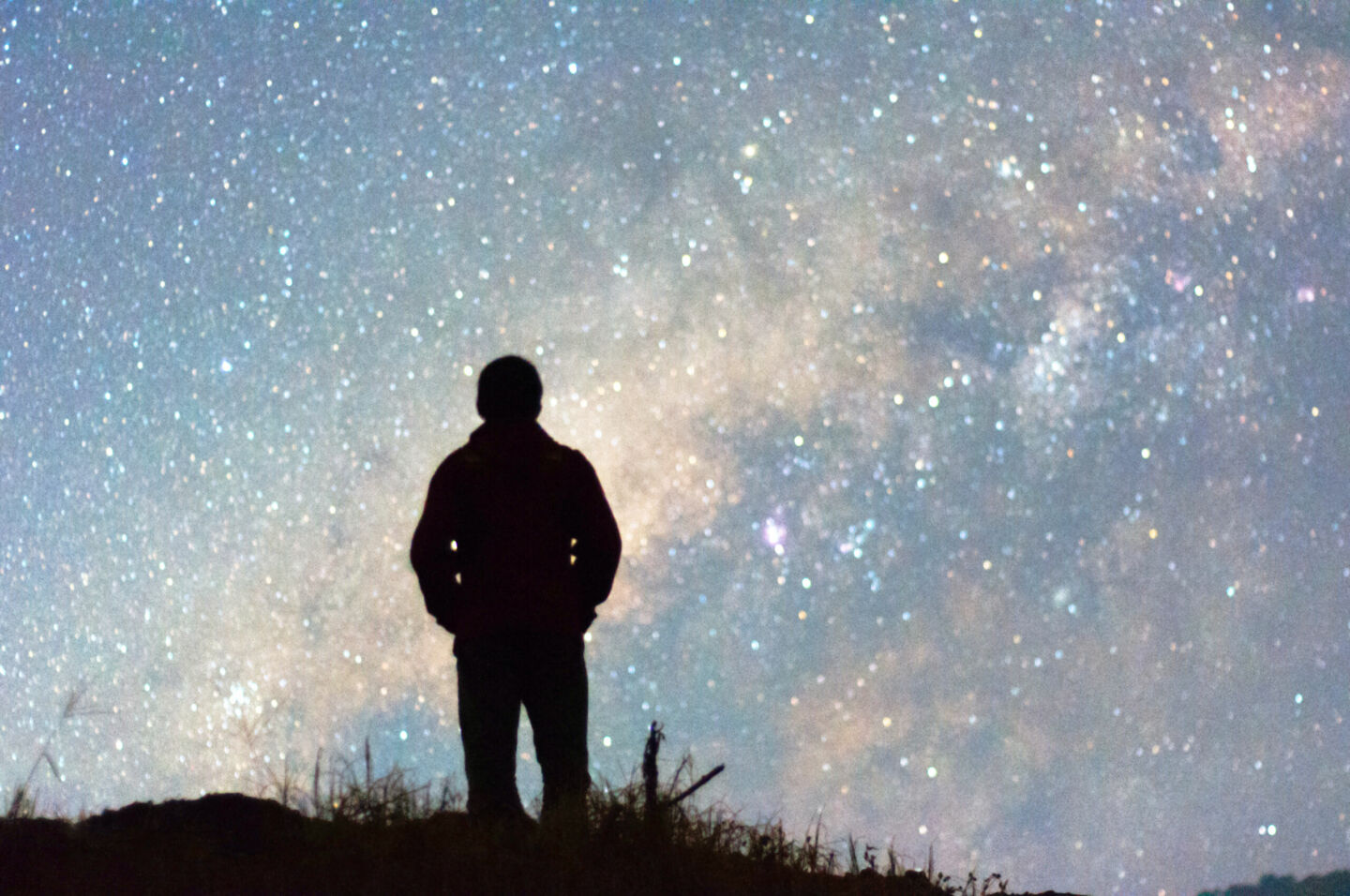
Tips For Viewing This Week’s Perseid Meteor Shower

The experience of seeing a ‘shooting’ or ‘falling star’ is familiar to anyone who’s spent an hour our two under a dark night sky. Can you imagine the experience of seeing hundreds of them on a given night – a true meteor ‘shower’?
Each August for at least the last 2,000 years the Earth’s orbit has swept through debris shed by a comet called Swift-Tuttle that last graced Earth’s skies in 1992. While the comet won’t return to the inner solar system for more than 100 years, streams of small particles of cosmic dust it left behind persist for centuries.
When these particles enter the Earth’s atmosphere, they briefly glow as they are heated to over 1,000 degrees due to friction between the dust and air molecules. After spending 4.5 billion years in the deep freeze of the outer solar system, these motes of dust are destroyed in a few brilliant seconds as they flash across our night skies.
The dazzling celestial show in the late northern hemisphere arrives again this week, and this year the circumstances are special: for the first time since 2007, skywatchers will see the so-called Perseid meteor shower without interference from moonlight. It’s the perfect opportunity while the nights are still warm to get outside and experience both the wonders of nighttime while seeing one of the best sky spectacles of the year.

Seeing the Perseids is easy with a clear sky and a northeastern horizon free of obstructions. The picture above is a simulation of the northeastern night sky at 9 P.M. local time as seen from the northern hemisphere in mid-August, around the time of year the Perseids reach their peak intensity. The red cross marks the radiant of the meteor shower, a point on the sky to which the tracks of the Perseid meteors all seem to trace back.
As the night carries on, the radiant rises progressively higher, bringing into view a larger fraction of the night sky in which Perseid meteors are visible. The best time of the night to see them is after local midnight, when the Earth’s rotation carries us into the direction of the stream. The effect is much like facing into a wind, whereas in the earlier evening we’re facing away; the “wind” of meteors has to catch up to us on the early evening side of night, and as a result we see fewer, slower meteors.
To view the Perseid meteor shower, no special equipment is required to enjoy this show: one needs nothing more than a good pair of eyes. Here are some suggestions for how to make your observing experience more enjoyable:
- Safety first! Carry a flashlight to help navigate in the dark, especially in unfamiliar places. Red or brown paper placed over the front lens of the flashlight will help preserve your eyes’ sensitivity to faint light.
- Use a reclining lawn chair or chaise lounge to relieve fatigue while looking up at the sky for long periods of time.
- Bring plenty of water, too, because it’s possible to dehydrate in warm temperatures on summer nights.
- If you’re observing after midnight, remember to dress warmly as the night may become quite cool in the pre-dawn hours.
More helpful hints are available from our friends at EarthSky.
Depending on variety of factors, in a typical year around the peak of the shower on the night of 12-13 August an observer can expect to see roughly 100 meteors per hour. In extraordinary years, the hourly rate can far exceed this and the sky may be spangled with many ‘fireballs’ – meteors so bright that they may even cast shadows on the ground!
While some Perseid meteors are bright enough to be seen under the light-polluted skies of cities, meteor showers are an astronomical event best seen under dark night skies far from cities. Bright city lights drown out the fainter members of the Perseids shower, leading to a lower apparent hourly rate of meteors in cities than in the countryside. Even the brighter Perseids are rendered less distinct by skyglow in cities, resulting in a display that is well short of its potential.
The Perseid meteor shower is a fine time to visit an IDA Dark Sky Place, many of which hold special public events in August for meteor watching. Not only are the dark nights at the Dark Sky Places ideal for the best Perseid experience, but they also remind us of the value of preserving these kinds of naturally dark locations for future generations.
Have a look at our Dark Sky Places Finder map and see if there’s a Dark Sky Community, Park or Reserve near you. If you’re not a member of IDA, consider joining our fight to save the night around the world. Together we can ensure that experiences like seeing the rain of hundreds of meteors against a dark night sky is a thrill that generations yet to come can enjoy.


















